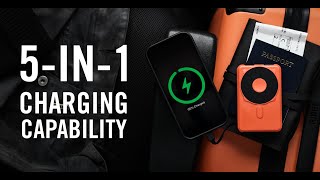
In the sea of daily e-mails I receive that are promoting a product or service, this particular one caught my attention because it was something I had been anticipating. Finally, for the first time since 2023, individuals in the USA can obtain a Wise debit card.
I felt thrilled because while Wise.com (previously Transferwise) users in Europe or Asia had the ability to get a card for ATM withdrawals, those in the United States were excluded from this option. While our counterparts around the globe were able to access their multi-currency accounts at stores and ATMs, we could only withdraw funds from our Wise accounts by transferring them to another bank account first, incurring a fee for that transfer. There was simply no straightforward way to access our own money.
However, the more I delved into the terms and conditions of this card, the more let down I became. I appreciate the company and have recommended their services numerous times. But I found myself questioning whether to even acquire this Wise debit card as a contingency for emergencies—that’s how concerning it is.
Here’s an outline of how this card will deplete your funds just to access your own money. Tally up the fees and you’re likely to spend more than you would with your regular bank ATM card internationally, even with its charges.
A Steep 2% Fee on Nearly Every Transaction
You might even have to pay just to obtain this card, which I’ll discuss shortly, but then this Wise debit card will continuously drain your funds after acquisition. Here’s a straightforward summary from their official website:
“The Wise Multi-Currency Card alleviates the stress of using ATMs overseas. You only incur a super-low fee on withdrawals after the first $100.”
Who withdraws less than $100 from an ATM?! I believe the only instance I’ve done that in the last two decades was when I used a machine in Argentina that limited withdrawals to $80 at a time. Otherwise, anyone who is financially savvy withdraws enough cash for an extended period, or they opt for the maximum allowed.
So the only scenario where you’ll encounter the “free” withdrawal is if you use the card at a grocery store, pharmacy, or café for a small purchase. But why bother with this card at all when you have a standard bank debit card that incurs no foreign transaction fees and has no limitations?
And if you’re engaging in the points and miles strategy, wouldn’t you prefer a credit card that provides rewards and pay it off? Or use a debit card that offers cash back? This card would be the least beneficial one in your wallet.
Upon examining the fine print, my jaw dropped. What they refer to as a “super-low fee” is actually 2% on every transaction. To put it simply, for every $100 you withdraw from your account, you’re giving Wise.com $2 as a transaction fee. On a typical $500 withdrawal, you would incur a $10 fee to them in addition to whatever the local bank charges.
This would render the Wise card the priciest in my collection, second only to (occasionally) Paypal’s. My Fidelity card charges $0 and reimburses local fees. My Novo.com business account charges $0 and refunds local costs up to $7 monthly. (My preferred Mexican ATM charges $1.50, so I rarely exceed that.)
My wife’s Capital One 360 card incurs no fees on their end, requiring only the local bank fee. My regular Regions bank card charges a flat $5 fee—half of what Wise takes on a $500 transaction—plus local charges.
Therefore, even if I acquired this Wise ATM card, it would rank #4 on my backup list, or #5 once I’m back in the states and can request a Schwab debit card with no fees. This implies a truly unfortunate string of events would have to occur before it ever sees the light of day from my home safe or a concealed spot while traveling “just in case.”
Expect Another Fee on Top of the Existing Fee
But there’s more bad news! You’ll incur additional charges if you make more than two ATM withdrawals in a month. You’ll face a penalty with a $1.50 fee in addition to the 2% fee they’re already assessing, any currency conversion fees involved, and the local bank fees. Here’s the chart from their website:
So they provide you this oh-so-useful suggestion: “Planning to withdraw money for vacation? It’s more economical to make one large withdrawal rather than several smaller ones. This will help you avoid the fixed $1.50 fee each time.” Wow, thanks.
Wise Might Charge You $$ Just to Send It
Have you ever been charged by a bank just to receive one of their debit cards? Probably not, but with Wise, you’re already at a loss before the








